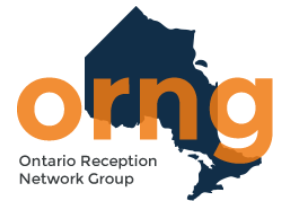
We collect basic website visitor information on this website and store it in cookies. We also utilize Google Analytics to track page view information to assist us in improving our website.
Part 2 of 4
By: Ontario teachers who are ESL/ELD school board leads and ERGO members as part of the ERGO Reading and ELLs working group as a subgroup of the Special Education and English language learners.
This small group of ESL/ELD board leads has met throughout the 2020-2021 school year to explore the reading instruction and best pratices to support English language learners in Ontario school boards. The purpose of the group is to report back to the larger group of ERGO members who have explored the resources and research focussed on the topic of special education and ELLs. This is the second of a series of blogs that summarize their observations, research, best practices and resources available to Ontario teachers supporting ELLs in their journey to learning to read and write in English while participating in curriculum learning at their grade level.
Teachers must first get to know their students and their previous learning and life experiences (gr 1-8 doc). This means building a trusting relationship and understanding the students likes, dislikes, former academic experiences, home language reading and writing skills, and comfort with reading. Creating simple books or texts that originate from the student’s interests or needs (ie. getting to know the school) is a meaningful and engaging place to start with students who are beginning to read in a new language.
Using a Google Slide template provides a teacher the place for a new student to see themselves in the text. Teachers can take pictures of the student in the rooms of the school and replace the photos in the book template. The student’s name and specific names of teachers could also be added. Using simple, patterned texts with matching photos from the student environment offers an entry point for the student and opportunity to build connections between the teacher student and possibly other students. This photo book is also a great way to build a connection with the family if the student is encouraged to take the book home and share it with their family.
When choosing a text to read, teachers will consider the background knowledge the student brings to the topic. For example, if the story is about camping in a Canadian environment and the student has only ever lived in an urban setting they may not be able to guess at what is happening in the pictures because of a lack of prior knowledge. Some cultures dislike animals in the house and so a story about a dog or cat in the house, if the student is not familiar with this North American practice, may cause them some discomfort or disgust that will be distracting while trying to read at an instructional level.
Teachers will do detailed book walks prior to reading to ensure students are familiar with the pictures and main idea of the story. The names of characters will be introduced and new vocabulary may be translated using Google Translate or Microsoft Translate or the Say Hi Translate App. Students may predict what will happen in the story after looking at the first couple of pages or the title page. This is valuable time spent to provide the student with background knowledge and vocabulary that will increase their fluency and comprehension while reading the text.
Considering the social language and academic language used in a text will signal to teachers what may best be pre-taught before reading a text. Before meeting with students, teachers may highlight new academic vocabulary, idioms, or language structures if the text is on paper or electronically shared. Pre-teaching the pronunciation and meaning of this new language will also increase student confidence, understanding, fluency and speed while reading.
Teachers of ELLs in the primary grades can often use the levelled texts in their schools with young multilingual students for guided, shared and independent reading. Students often have time to learn new words and stories as part of the classroom learning and small group instruction. In the lower grades most students are learning to read.
The strategies and tools listed in Ontario Guides to Effective Reading Instruction and the Think Literacy Cross Curricular Approaches are available for teachers to access and integrate into their programming for all students, including ELLs. The Supporting English Language Learners- A Practical Guide for Educators Grade 1-8 and the Supporting English Language Learners in Kindergarten-A Practical Guide for Educators outline effective instructional strategies for ELLs to learn to read.
There are many strategies and tools available to teachers supporting the needs of English language learners. Which work for you and do you have others you can share?
Members of the English Resource Group of Ontario (ERGO) meet regularly in working groups to explore topics related to the Ministry’s ESL/ELD Policy document and related resources to help provide their school boards with relevant information, research and insight to supporting the needs of all Engish language learners. Feel free to add additional questions or insight you may have as an Ontario educator supporting ELLs in the comment section below.

